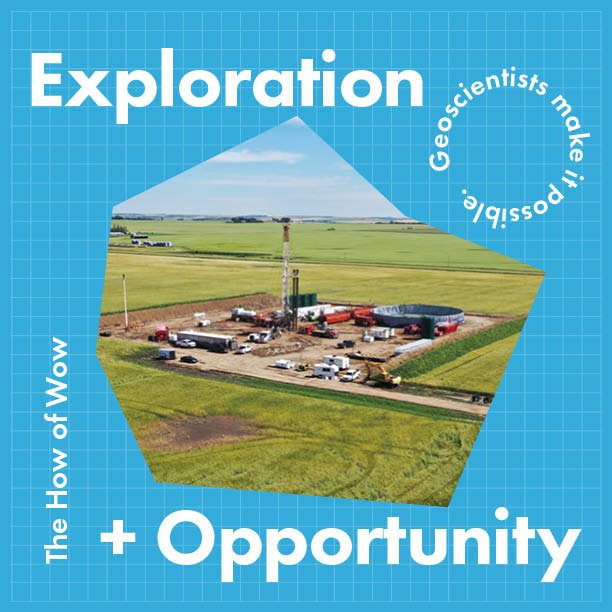Leduc, Alberta
Explore + Opportunity
For the last 360 million years, a resource that could play a vital role in transitioning the entire energy industry has been buried underground in central Alberta.
Lithium is the critical resource for developing batteries for things like electric vehicles, mobile phones, and utility-scale storage of renewable energy. With demand for lithium skyrocketing around the world, it could be the resource of the future.
Under a new exploratory drilling program, geoscientists regulated by the Association of Professional Engineers and Geoscientists of Alberta (APEGA) have made history with the first ever brine-production wells for the purpose of evaluating lithium drilled in Alberta.
Two new wells drilled and one existing acquired well under this program will give geoscientists a clearer picture of the characteristics of the approximately 200-metre-thick Leduc Reservoir. They will also give geoscientists the opportunity to validate the richness of lithium in this underground water reservoir, commonly referred to as brine. Eventually, the E3 Lithium team will do an in-field test of the cutting-edge technology for extracting lithium from the brine in efficient and industry-leading ways.
The future resource of Alberta
E3 Lithium, a resource and technology company established in 2016 and APEGA permit holder, holds access to roughly 24 million tonnes of inferred lithium roughly 2,500 metres underground between Edmonton and Calgary. It’s one of the largest known sources of inferred lithium in the world.
However, being an inferred resource means the amount is only an initial estimate based on available geological evidence and sampling, which — up to now — has only scratched the surface.
Natasha Morris, a geoscientist and APEGA member, is part of the E3 Lithium team taking historic steps to measure and confirm the amount and purity of the resource. They are also developing the technology for extracting lithium so they can eventually process and bring it to market.
“This first step with the drilling program is all about exploration as there hasn’t been a lot of data gathering on lithium in this region yet,” says Natasha, whose passion for geoscience started at an early age searching for rocks and fossils along the Red Deer River.
“We’re diving into the unknown in a lot of ways. It’s incredible to be forging a new path for this resource in Alberta.”
Clean extraction, smaller footprint
Conventional lithium extraction methods around the world rely on an evaporation process that can take months or even years. They also require massive surface areas for ponds full of brine to literally sit and evaporate in the sun to eventually extract the resource from the remaining salt.
E3 is developing proprietary technology and processes for which lithium is extracted directly from the brine through an ion exchange. To do this, they extract the brine from the ground and mix in a sorbent that attaches to the lithium on a molecular level and removes impurities. The lithium-void brine is then sent back underground for minimal environmental disruption and waste.
“We are able to extract lithium with 98 per cent of the impurities removed in the initial lab tests of our ion exchange,” says Morris. “It takes us a matter of minutes, instead of months, to extract the lithium. We are also using less than three per cent of the surface area used in the evaporation method, which makes the process much more environmentally friendly.”
The next step is for E3 Lithium to test their industry-leading direct lithium extraction technology in the field to see how it works and interacts with the environment and conditions to make any necessary adjustments before progressing to commercial operations.
Drilling down with an Alberta advantage
Extracting resources in Alberta might sound like a familiar concept. For Natasha and the subsurface team at E3 Lithium, it’s not just familiar, it’s an advantage.
Oil-extraction operations that have been established across Alberta for decades provide the infrastructure needed to extract lithium-rich brine. This allows E3 Lithium to make history leveraging Alberta’s history. Not only that, there is a workforce in Alberta with transferable skills for resource extraction.
“We have the people, expertise, and tools we need for this right here in Alberta,” says Natasha. “This can create a lot of jobs, a backbone of the economy. It’s a way of recognizing the need for new resources leveraging what we already have and puts us at the forefront of the energy transition in a way that is unique to Alberta.”
Geoscientists and engineers, proudly regulated by APEGA, are set to put Alberta on the map in a way that could be central for the global energy transition. The exploratory drilling program will run until fall 2022, which will provide the foundation for eventual larger-scale resource production and commercialization of lithium expected as early as 2025–26.

